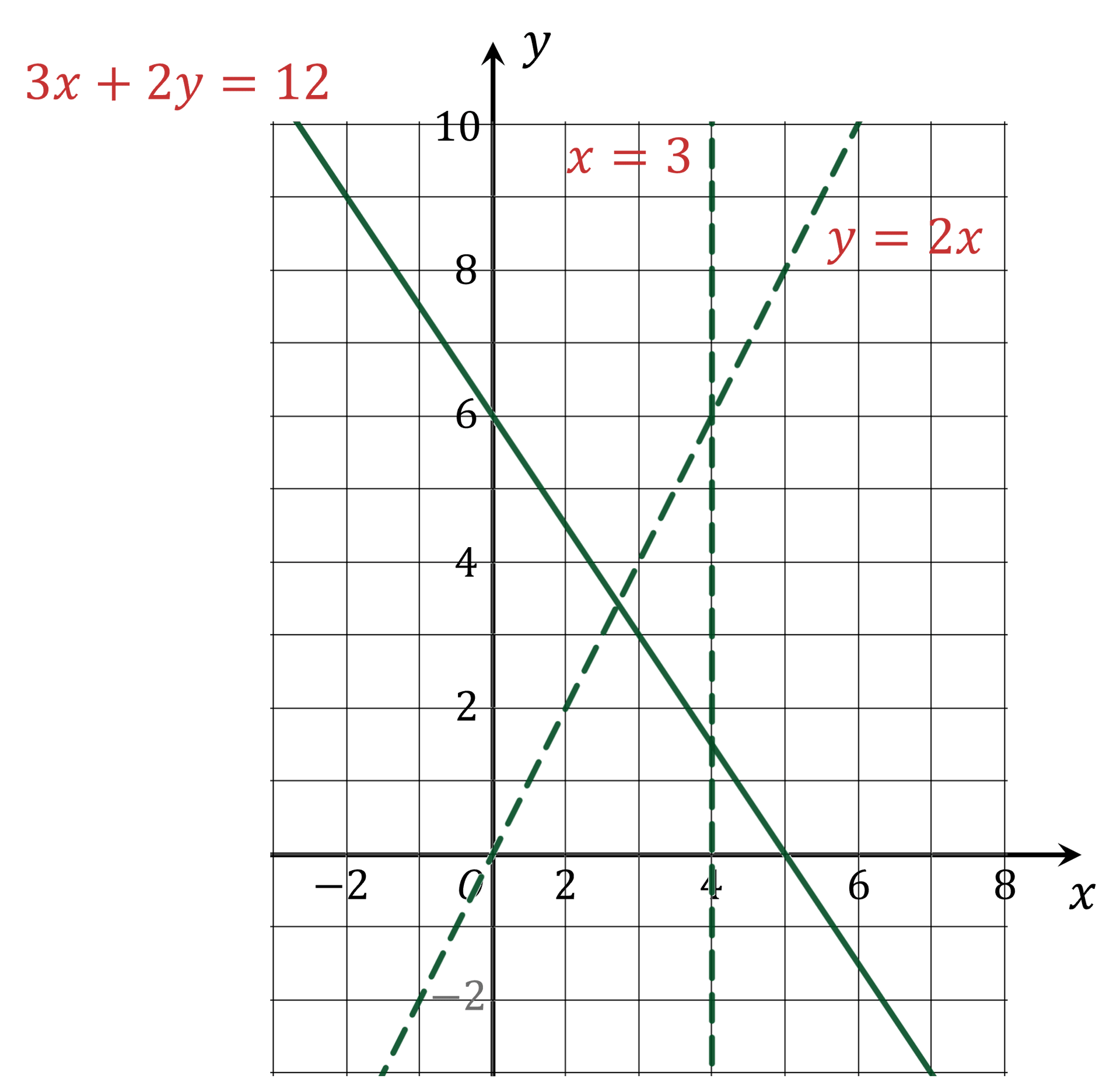Finding Regions using Inequalities
How do I draw inequalities on a graph?
- STEP 1
Draw the line (as if using “=”) for each inequality-
Use a solid line for ≤ or ≥
-
to indicate the line is included
-
-
Use a dashed line for < or >
-
to indicate the line is not included
-
-
- STEP 2
Decide which side of line is wanted.- Below line if "y ≤ ..." or "y < ..."
- Above line if "y ≥ ..." or "y > ..."
- To the left of the line if "x ≤ ..." or "x < ..."
- To the right of the line if "x ≥ ..." or "x > ..."
-
If unsure, use a point that's not on the line as a test
-
Substitute its x and y value into the inequality and check if the inequality is satisfied
-
This will tell you whether or not the inequality holds true on that side of the line
-
- It's helpful to indicate the 'correct side' of each line on your sketch
- STEP 3
Choose the region that satisfies all of the inequalities- This is the region that is on the correct side of all the lines
- The exam question will often ask you to shade and/or label the region
Exam Tip
- You can also indicate a region by shading the unwanted bits and leaving the region unshaded
- Some students find this easier
- The mark scheme awards full marks for either method
Worked example
On the axes given below show, by shading on your sketch, the region that satisfies the following three inequalities:
Label the region .
First draw the three straight lines, ,
and
You may wish to rearrange to the form
first:
The line takes a solid line because of the "≥"
The lines and
take dotted lines because of the "<"

Now we need to determine the wanted and unwanted regions
For (or
), the wanted region is above the line
We can check this with the point (0, 0)
is false, so (0, 0) does not lie in the wanted region for
For , the wanted region is below the line
If unsure, check with another point, for example (1, 0)
is true, so (1, 0) lies in the wanted region for
For , the wanted region is to the left of
(If unsure, you could check with a point)
Finally, shade the region that satisfies all three inequalities on the graph
Don't forget to label the region R




